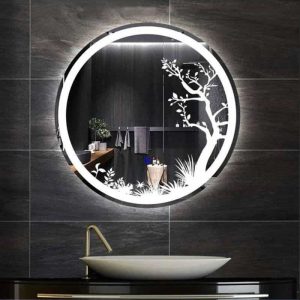Exploring Different Types of Home Security Cameras

In an era of rapidly advancing technology, securing one’s home has become more accessible and effective than ever before. A crucial component of modern home security systems is the camera, and choosing the right one can make all the difference in protecting your loved ones and property. With an array of options available in the market, selecting the best camera for your home can be overwhelming. In this comprehensive guide, we will explore the various types of home security cameras, their features, and provide recommendations for the best cameras in different categories to help you make an informed decision.
1. Types of Home Security Cameras
Before delving into specific camera recommendations, it’s essential to understand the different types of home security cameras available.
1 Indoor Cameras
Indoor cameras are invaluable additions to your home security system, offering surveillance and peace of mind within the confines of your living space. These cameras are designed with a primary focus on monitoring the interior of your home. They serve multiple essential purposes, including keeping an eye on your family, ensuring the safety of pets, and safeguarding your valuable possessions.
One of the distinct features of indoor cameras is their compact and unobtrusive design. They are typically smaller and more aesthetically pleasing than their outdoor counterparts, making them blend seamlessly with your home’s decor. Since indoor home security cameras are shielded from the harsh simplisafe outdoor camera, they do not require the rugged construction necessary for outdoor models.
2 Outdoor Cameras
Outdoor cameras are the stalwarts of home security, designed to withstand the harshest weather conditions while providing robust surveillance of your home’s perimeter. Their primary role is to deter potential intruders, capture crucial footage in case of incidents, and offer an added layer of security to your property.
These cameras are engineered for resilience, capable of enduring rain, snow, extreme temperatures, and even vandalism. They are your first line of defense, helping to prevent break-ins and vandalism by acting as visible deterrents. When placed strategically around your home’s exterior, they create a formidable security barrier.
3 Doorbell Cameras
Doorbell cameras, also known as video doorbells, revolutionize the way you interact with visitors and secure your front porch. These smart devices replace traditional doorbells and offer a unique vantage point for home security. They are becoming increasingly popular for their ability to provide a live video feed of your front door area, enhancing safety and convenience.
The primary purpose of doorbell cameras is to monitor and manage access to your home. They are equipped with video and audio capabilities, allowing you to see and communicate with visitors remotely, whether you’re at home or away. This is particularly valuable for monitoring package deliveries, verifying the identity of visitors, and deterring potential porch pirates.
4 Wireless Cameras
wireless security cameras have gained immense popularity due to their ease of installation and versatility. These home security cameras connect to your home’s Wi-Fi network, eliminating the need for cumbersome wires and making them exceptionally convenient to set up. They can be placed virtually anywhere within the range of your Wi-Fi signal, providing flexibility in positioning and monitoring.
Wireless cameras are particularly suitable for renters who may not have the freedom to install permanent fixtures or those who prefer a hassle-free DIY installation process. Their wireless security cameras nature simplifies the setup, making them accessible to individuals without technical expertise. This adaptability is one of their standout features.
5 Wired Cameras
Wired cameras represent the gold standard of reliability and stability in home security. These cameras require a physical connection to a power source and sometimes a network cable, ensuring a consistent and uninterrupted flow of data and power. They are the preferred choice for long-term installations where reliability is paramount.
One of the key advantages of wired cameras is their unwavering performance. They don’t rely on batteries or wireless security camera signals, making them immune to signal interference or power outages. This makes them ideal for critical surveillance points that require constant monitoring, such as entrances, driveways, or outdoor perimeters.

2. Key Features to Consider
When choosing a home security camera, several key features should guide your decision-making process.
1 Resolution and Image Quality
Resolution and image quality are pivotal factors in choosing a home security camera. High-resolution cameras produce clear and detailed images, enhancing your ability to identify people and objects in recorded footage. The most common choice is Full HD (1080p), which provides excellent clarity for most applications. However, if you prioritize even sharper visuals, some cameras offer 4K resolution, delivering exceptionally crisp images.
2 Field of View
The field of view (FOV) determines how much area a camera can cover. A wider FOV is ideal for monitoring large spaces like a backyard or living room, as it captures more of the scene. Conversely, a narrower FOV may be sufficient for focused surveillance of specific areas. The FOV choice depends on your intended use; a balance between coverage and detail is key.
3 Night Vision
Night vision is essential for 24/7 surveillance. Cameras equipped with night vision use infrared (IR) LEDs to illuminate dark areas, allowing them to capture clear footage at night. When choosing a camera, pay attention to the night vision range, as a longer range ensures better visibility in low-light conditions and enhances your camera’s effectiveness during nighttime.
4 Motion Detection
Motion detection is a crucial feature that alerts you to activity within the camera’s view. It’s particularly useful for detecting unexpected movements or intruders. Advanced security cameras offer customizable motion zones and sensitivity settings, allowing you to tailor notifications and reduce false alarms caused by, for example, pets or swaying trees. Fine-tuning this feature ensures you’re only alerted to genuinely significant events.
5 Two-Way Audio
The two-way audio capability allows you to communicate with individuals near the camera. This feature is beneficial for various scenarios, such as talking to visitors at your front door or warning potential intruders. It adds an interactive dimension to your home security system, enabling real-time communication and, if needed, the ability to take immediate action.
6 Storage Options
Consider how your camera stores video footage. Some home security camera system offer cloud storage, providing convenient access to your recordings from anywhere with an internet connection. Others use microSD cards for local storage or can connect to network-attached storage (NAS) devices. Your choice should align with your preferences for accessibility, security, and storage capacity.
7 Smart Home Integration
Integration with smart home platforms like Amazon Alexa, Google Assistant, or Apple HomeKit enhances your camera’s functionality. It allows you to control the camera and receive alerts through voice commands or dedicated smartphone apps. Smart home integration also facilitates seamless interaction with other smart devices in your home security ecosystem, providing a cohesive and efficient solution.
8 Installation and Setup
The ease of installation and setup can significantly impact your experience with a home security camera. Some cameras come with user-friendly installation guides, making them suitable for DIY enthusiasts. Others may require professional installation due to wiring complexities or specialized placement needs. Evaluating your comfort level with installation and the camera’s specific requirements is essential to ensure a hassle-free setup that meets your security goals.

3. The Best Cameras for Home Security
Now that you understand the different types of cameras and their essential features, let’s explore some of the best options in each category.
1 Best Indoor Camera: Nest Cam Indoor
Nest Cam Indoor is a top-notch indoor security camera that offers a 1080p resolution, a 130-degree FOV, and excellent night vision. It integrates seamlessly with Google Assistant and Amazon Alexa, allowing voice control and smart home automation. Its motion detection and alerts are highly customizable, and the camera supports two-way audio for easy communication.
2 Best Outdoor Camera: Arlo Pro 4
The Arlo Pro 4 is a versatile outdoor camera known for its 2K resolution, 160-degree FOV, and advanced motion detection. It’s wire-free and weather-resistant, making it an excellent choice for simplisafe outdoor camera surveillance. The camera also boasts color night vision and a built-in spotlight for added security.
3 Best Doorbell Camera: Ring Video Doorbell Pro
Ring Video Doorbell Pro combines the convenience of a doorbell with the functionality of a security camera. It offers 1080p video quality, a 160-degree FOV, and customizable motion zones. With its sleek design, it’s a popular choice for monitoring front doors. It integrates seamlessly with the Ring app and other Ring security devices.
4 Best Wireless Camera: Blink Outdoor
The Blink Outdoor camera is a wireless option that offers 1080p resolution, a 110-degree FOV, and exceptional battery life. It’s straightforward to install and manage through the Blink app. This camera is an excellent choice for those looking for a cost-effective wireless security cameras solution with reliable performance.
5 Best Wired Camera: Reolink RLC-410
For those who prefer wired cameras, the Reolink RLC-410 is a standout choice. It provides 4MP Super HD resolution, a 80-degree FOV, and robust night vision. With its PoE (Power over Ethernet) support, it’s easy to set up and maintain. The camera can also be integrated with Reolink’s NVR (Network Video Recorder) for extensive storage options.
4. Conclusion
Selecting the best camera for your home security needs is a vital step toward ensuring the safety and protection of your loved ones and property. The wide variety of camera types and features available in today’s market can be overwhelming, but by considering your specific requirements, you can make an informed decision.
Indoor home security cameras offer a discreet way to monitor the interior of your home, keeping an eye on family members, pets, and valuable possessions. In contrast, outdoor cameras provide robust surveillance of your home’s perimeter, withstanding harsh weather conditions and deterring potential intruders.
Doorbell cameras revolutionize access control and package monitoring, offering real-time communication with visitors and enhancing convenience. Wireless cameras are easy to install and flexible in placement, making them suitable for renters and those seeking a hassle-free setup. Wired cameras provide unwavering reliability and are ideal for long-term, stable installations.
Frequently Asked Questions:
Which security camera is best in Pakistan?
The best security camera in Pakistan, or anywhere else, depends on your specific needs and preferences. Some popular options include brands like Nest, Arlo, and Ring, which offer a range of indoor and outdoor security camera system with various features. To determine the best camera for you, consider factors like your budget, desired features (e.g., resolution, night vision, two-way audio), and whether you prefer wired or wireless security cameras options.
How many cameras does a 360 camera have?
A 360-degree camera typically has two or more lenses and sensors that capture a full 360-degree view of its surroundings. These cameras are designed to create immersive panoramic or spherical images and videos.
Which camera is best for house security?
The best camera for home security depends on your specific requirements. For indoor security, options like the Nest Cam Indoor or Arlo Pro 4 are excellent choices. For outdoor surveillance, consider the Arlo Pro 4 or Ring Video Doorbell Pro for front door security.
What to look for when buying a 360 camera?
When buying a 360-degree camera, consider factors such as image resolution, video quality, stitching quality (how it blends multiple images), ease of use, compatibility with your devices, battery life (if applicable), and any additional features like live streaming capabilities.
What is the difference between a camera and a 360 camera?
The primary difference between a standard camera and a 360-degree camera is their field of view. Standard cameras capture a fixed perspective, while 360-degree cameras capture a complete spherical view, allowing you to see in all directions simultaneously.
Does a home security camera need Internet?
Many modern home security cameras rely on an internet connection to function fully. While some cameras can operate without the Internet, features like remote monitoring, alerts, and cloud storage typically require an internet connection.
Do 360 cameras take pictures?
Yes, 360-degree cameras can capture both photos and videos. They are designed to create immersive panoramic images that cover a full 360-degree field of view.
Which is the best 360-degree camera for home security?
Some notable 360-degree cameras for home security include the Insta360 ONE X2 and the Ricoh Theta Z1. However, the best choice depends on your specific security needs and preferences.
What is the disadvantage of a 360 camera?
One disadvantage of 360-degree cameras is that they can be more complex to use compared to traditional cameras. Additionally, the stitching process, where multiple images are combined, can sometimes result in visible seams in the final output.
Which brand of 360 camera is best?
The “best” brand for a 360-degree camera can vary depending on your requirements. Some reputable brands include Insta360, Ricoh, and GoPro, all of which offer high-quality 360-degree cameras.
How far can a 360 camera see?
The range a 360-degree camera can see depends on the specific camera model and lens used. Some security camera system have a range of 30 feet, while others can capture details from much farther away.
How do I connect my 360 camera to my phone?
To connect a 360-degree camera to your phone, typically, you need to install the camera’s companion app on your smartphone, enable Bluetooth and Wi-Fi on your phone, and follow the app’s instructions for pairing the devices.
What is the price of Mi Home Security Camera 360 in Pakistan?
The price of the Mi Home Security Camera 360 in Pakistan can vary depending on the seller, condition, and any bundled accessories. It is advisable to check with local retailers or online marketplaces for the most up-to-date pricing information.
Can I connect a CCTV camera to my phone?
Yes, you can connect a CCTV camera to your phone using compatible apps and devices. Many modern CCTV systems offer mobile apps that allow remote monitoring and control.
Does the Mi 360 camera work without the Internet?
While some basic functions of the Mi 360 camera may work without the internet, features like remote access, cloud storage, and real-time alerts typically require an internet connection for full functionality.
What is the difference between 360 and 180 cameras?
The main difference between 360-degree and 180-degree cameras is their field of view. A 360-degree camera captures a complete spherical view in all directions, while a 180-degree camera captures only half of the sphere, usually in a horizontal or vertical panorama.
How many phones can be connected with Mi 360 camera?
The number of phones that can be connected to a Mi 360 camera may vary depending on the camera model and the manufacturer’s specifications. Generally, multiple phones can connect to a single camera as long as they have the required app installed.
What is the price of a 360 DSLR camera?
The price of a 360-degree DSLR camera can vary significantly depending on the brand, model, and features. High-end 360-degree DSLR cameras can cost thousands of dollars, while more affordable options may be available for several hundred dollars.
What is a 360 vs. 3D camera?
A 360-degree camera captures a complete panoramic view in all directions, while a 3D camera captures depth information to create a three-dimensional effect. These security camera system serve different purposes: 360-degree cameras provide immersive views, while 3D cameras enhance depth perception in photos and videos.
Is a 360 camera good for travel?
Yes, a 360-degree camera can be an excellent choice for travel enthusiasts. It allows you to capture immersive and interactive travel experiences, enabling viewers to explore your surroundings as if they were there. However, keep in mind that 360 cameras may have specific considerations, such as storage and post-processing, for travel use.








